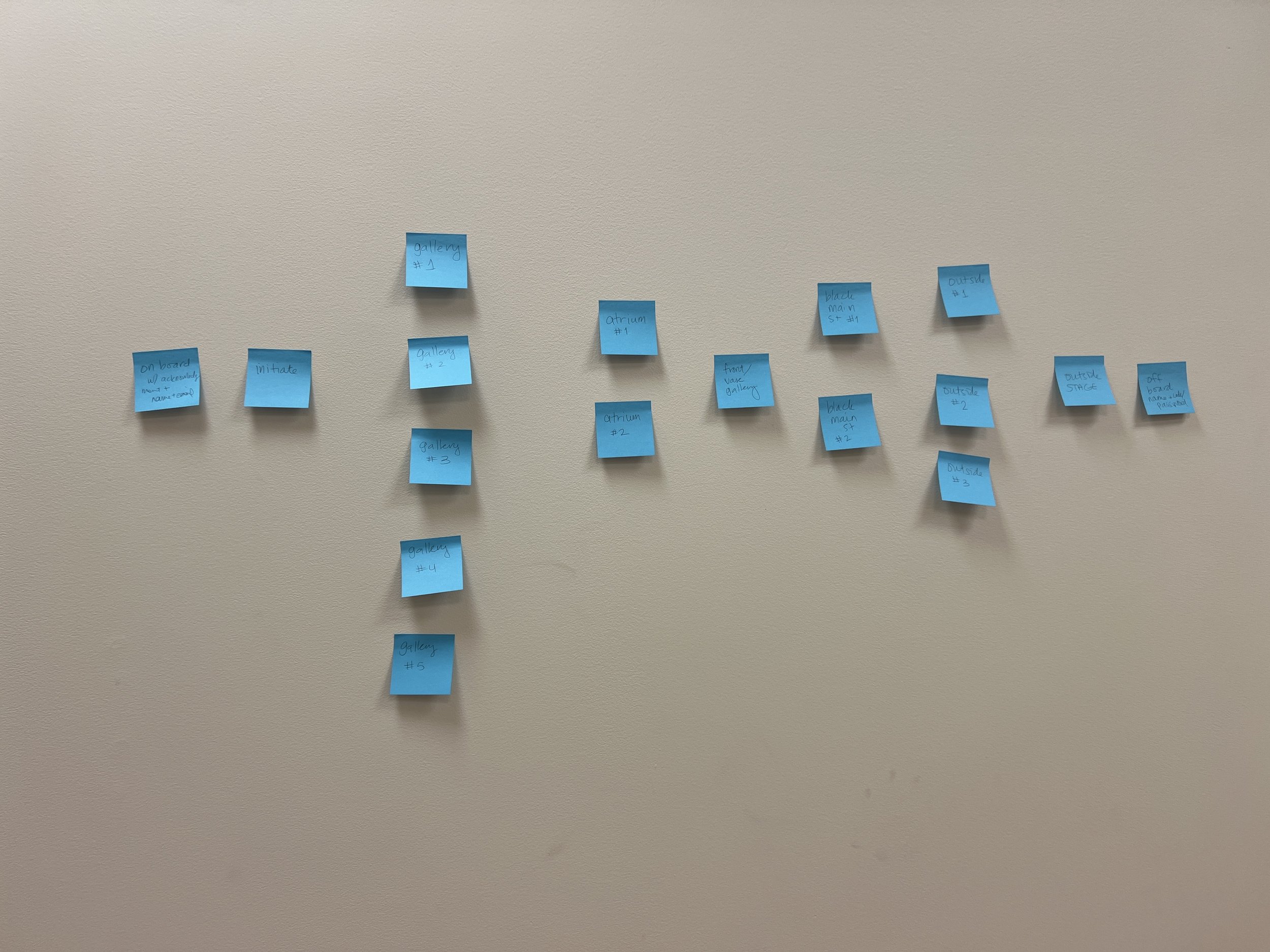Project 3:
AR Scavenger Hunt for the Columbia Museum of Art
Challenge: Create an augmented reality scavenger hunt for the Columbia Museum of Art’s Arts and Draughts event
Goals: Highlight work within the museum and promote guest engagement with the exhibitions
Research + Inspiration
The Columbia Museum of Art (CMA) asked us to design an augmented reality (AR) scavenger hunt for their fall Arts and Draughts event. We were given a timeline of one month to develop, test and deliver the project, and we worked together as a team of 22 students divided into 7 sub-groups. In initial talks with the client, we decided to highlight pieces all throughout the museum to encourage guests to move throughout the exhibits. As a team, we mapped out the museum and discussed with the client which galleries and areas were the most important to feature and which galleries to avoid. To organize our research and development as a team, we used Miro, a digital collaboration platform.
Mapping out the user flow allowed us to choose what galleries and pieces we would be highlighting. As smaller subgroups, each group created two experiences, making 14 total stops in the scavenger hunt. We decided to split up the hunt into two parts, allowing the guests to off board halfway through the hunt, or complete the whole hunt. This allowed us to engage with more people, as some may not have time or the desire to complete the full 14 stops.
As we broke up into smaller teams, we pinpointed exactly which pieces we were going to highlight. Each group researched and developed moodboards for their experience, and began writing clues for each stop of the scavenger hunt.
My smaller group had two experiences to develop, one in the galleries of the museum and one in the atrium. The experience I was tasked with developing was for a painting in the galleries called The Pine Cone Gatherers (1866) by Worthington Whittredge. The other piece we highlighted was Tetramorphic Form (2018) by Winston A. Wingo.
Each group’s section on the Miro board
Whittredge, The Pine Cone Gatherers, 1866
Process
To create the AR experience, we used Adobe Aero. Aero allows users to scan a QR code to trigger an experience, and it does not require an app download or any other software for the user. For the experience I was developing, I wanted to bring the piece to life, and create some kind of movement. The painting is large and sits on a wall in the center of the gallery, which gave me a lot of space to work with while developing the experience. I decided to create a three-dimensional animation of leaves falling when the users scanned the painting. My goal was to make the users feel more immersed in the painting with the leaves floating down around them. I developed the experience using an image trigger, meaning that when users scanned the painting with their smartphones it would trigger the animation to begin.
The group with the experience following mine created a clue which I placed inside my experience. As a team, we created clue layouts using the same typeface to standardized the design across all experiences.
FINAL
The final scavenger hunt experience was at the CMA’s Arts and Draughts event, on November 8th, 2024. For each stop, users scanned a QR code to trigger the experience. When the users were done with the hunt, they were provided with links to the Graphic Design and Illustration at SVAD’s website, and a form where they could enter a raffle for finishing the hunt. In total, we had 101 users visit the website, 95 people onboard the hunt, and 31 off board. The museum felt that the scavenger hunt was very successful, and decided to keep the scavenger hunt for an additional two months following the event.













